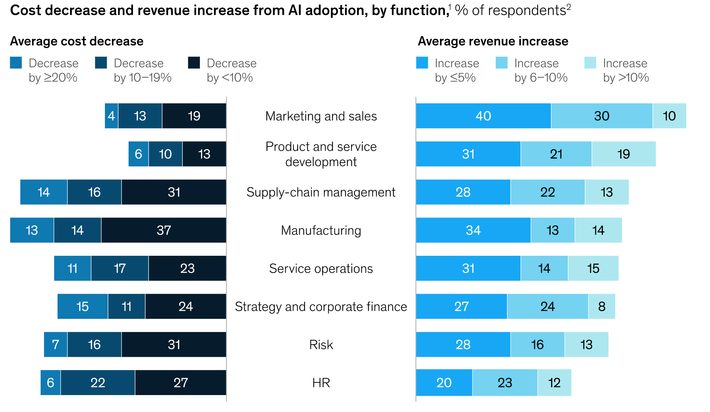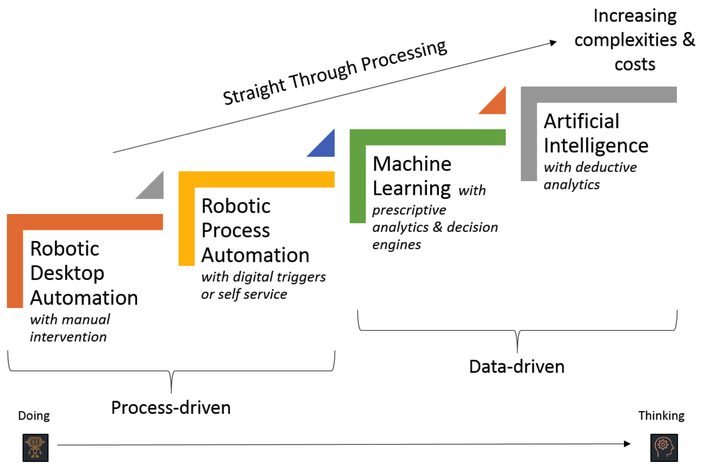Summary: Too many solutions. We are at an inflection point where too many vendors are offering too many solutions for moving our AI/ML models to production. The very real risk is duplication of effort, fragmentation of our data science resources, and incurring unintended new technical debt as we bind ourselves to platforms that have hidden assumptions or limitations in how that approach problems.
 Remember when our biggest problem was getting our models off of data science platforms and into production. Well the market is nothing if not efficient and hundreds of platform companies have been laboring away to help solve your pain point.
Remember when our biggest problem was getting our models off of data science platforms and into production. Well the market is nothing if not efficient and hundreds of platform companies have been laboring away to help solve your pain point.
The problem arising for the CDO, CAO or any other CXX is trying to decide which and how many of these you need. And the problem is exacerbated by the fact that adopting any one of these solutions:
- Creates a cadre of champions advocating for their particular platform.
- Creates more technical debt by locking in certain styles of solutions or even APIs without fully understanding the blind spots of any given platform or the rigidity of the solution.
- Means that your data science team will now need to spread out over a variety of platforms each of which requires some technical depth and probably increases cost.
- Some of these platforms present themselves as general purpose (Intelligent Automation), some unique to particular processes (CRM, Marketing Automation, Content Management, Supply Chain Management), and some are enhanced features promoted by your existing ERPs like PeopleSoft, Oracle, and SAP all suggesting duplication of effort.
The problem is frankly mind boggling not only about which combination of platforms make the best and most efficient sense for your company but at a more fundamental level, who should be making these decisions.
The answer in the short run is that the problem isn’t recognized, no one is trying to rationalize these tools, and the net result is significantly diluting the effectiveness of your AI/ML strategy.
Victims of Our Own Success
After many years of advocating for companies to adopt and implement AI/ML strategies we’re finally getting some traction. The good folks at McKinsey recently published their 2019 Global AI Adoption Survey, and while there are champions and laggards the overall pace of adoption is impressive.
I’ll only offer one chart that shows that pretty much all adopters are seeing meaningful cost reductions and revenue increases from their projects.

The main benefit of this chart is to organize these improvements around the major processes of the organization showing that all of them are benefiting.
The downside of this is that every single one of these mega-processes already has a platform with a toe-hold in your organization. As we add AI, every one calls out for support from your data science resources that are in danger of becoming increasingly fragmented across these systems.
About the Major Platforms with AI/ML Enhancement
This isn’t intended to be a comprehensive evaluation or even to offer a single solution. More like which rocks to look under in evaluating the problem.
The major decision support platforms that immediately come to mind with AI/ML enhancements on the marketing and sales side are these:
- CRM
- Content Management
- Marketing Automation
The scope of all three of these can overlap significantly depending on the vendors. It’s likely that CRM and Marketing automation already have NLP, NLU, and chatbot functionality. The underlying text and language capabilities have largely been commoditized but not the logic trees that drive your customer interface chatbots.
The largest exposure I see here however is in the scoring models that drive customer acquisition, upsell, cross sell, and churn prevention. If these exist in different systems do you even have an inventory of what they are and where they are? Are the results of closely duplicated scoring models even similar?
Supply Chain Management, HRIS, and most financial and risk mitigation systems are a bit easier to categorize so that you know exactly which AI/ML models are at work in each.
RPA and Intelligent Automation (IA) – Growing Fast and Frequently Misleading
One of the major market developments creating complexity here are the rapidly expanding RPA and IA platforms which promise to be general purpose and can cross many of the processes currently handled by the specialty platforms above. Should you let them?
Unfortunately there is a huge variation in capabilities among these platforms that’s made even more complicated by vendors engaged in AI-washing (claiming there’s AI inside when there are only simple rules). There are standard definitions for these platforms but it’s not unusual to see diagrams like this one that attempts to rename all of AI/ML as Intelligent Automation.

The technical literature tells a different story. That RPA is a rules driven system originally intended primarily for moving information from one system to another where APIs don’t exist. IA is an elaboration on this that does employee what we might call commodity AI/ML especially in image and text recognition.
A good short example is automated processing of invoices. An RPA solution could find incoming invoices in email streams presumably by looking in the title line and moving those to a separate folder without human intervention.
The Intelligent Automation version uses image and text recognition models to extract the specific invoice details from highly unstructured vendor invoices and moving that data to specific fields in your financial system so they can be processes.
It is frequently said that both RPA and IA are more about ‘tasks’ than what we think of as ‘processes’ but there is a strong movement afoot among IA vendors to build platforms that can use text and image AI/ML and even ML scoring models to automate broader processes. This is where the potential overlap with your existing systems becomes a challenge and requires rationalizing before committing to teams of internal IA experts supported by your data science resources.
A quick look at the McKinsey adoption study shows that RPA is the most frequently adopted ‘AI/ML’ tool for adoption. Your challenge is to determine whether this is actually AI/ML or simple rules driven automation, and to what extent you should encourage its adoption.
Sorry to leave you with a problem without offering a solution. Finding the right C-Level exec in your organization to be charged with the efficient use of data science is the first challenge.
The second is to inventory all the platforms that require data science support, identify any duplication, blind spots, and rigidity in solution approach, and then formulate a policy that optimizes the benefits of AI/ML while also optimizing efficiency. And since we are in that Wild West period of vendor claims, particularly watch out for AI/ML that isn’t there, that requires over much support, or claims to be able to cut across many mega-processes where domain expertise is as important as the AI/ML embedded tools.
Other articles by Bill Vorhies
About the author: Bill is Contributing Editor for Data Science Central. Bill is also President & Chief Data Scientist at Data-Magnum and has practiced as a data scientist since 2001. His articles have been read more than 2 million times.
He can be reached at:
[email protected] or [email protected]
